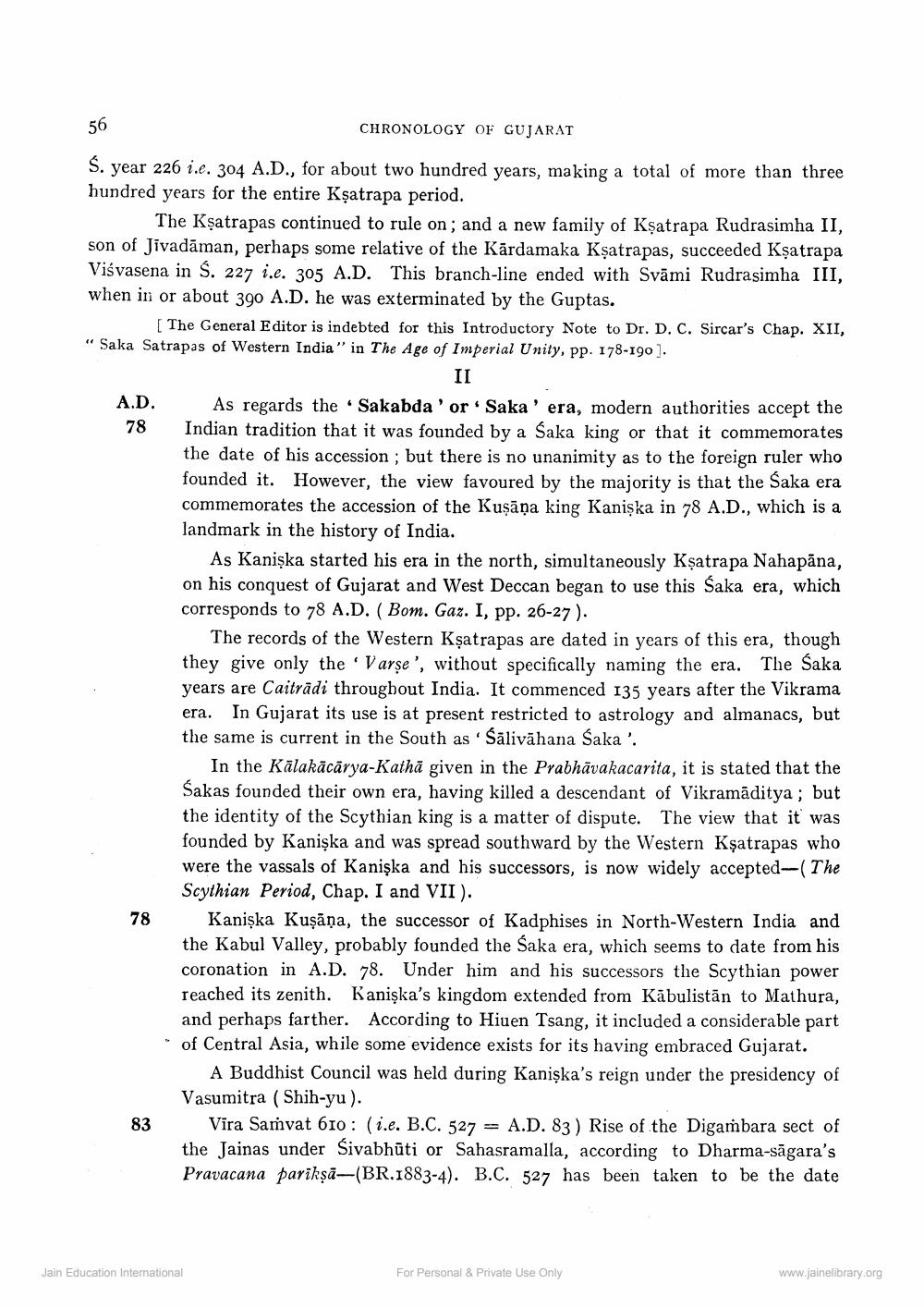________________
CHRONOLOGY OF GUJARAT
78
$. year 226 i.e. 304 A.D., for about two hundred years, making a total of more than three hundred years for the entire Ksatrapa period.
The Kşatrapas continued to rule on; and a new family of Kşatrapa Rudrasimha II, son of Jivadāman, perhaps some relative of the Kārdamaka Kşatrapas, succeeded Kșatrapa Viśvasena in $. 227 i.e. 305 A.D. This branch-line ended with Svāmi Rudrasimha III, when in or about 390 A.D. he was exterminated by the Guptas.
[The General Editor is indebted for this Introductory Note to Dr. D. C. Sircar's Chap. XII, " Saka Satrapas of Western India" in The Age of Imperial Unity, pp. 178-190).
II A.D. As regards the ‘Sakabda 'or. Saka' era, modern authorities accept the
Indian tradition that it was founded by a saka king or that it commemorates the date of his accession ; but there is no unanimity as to the foreign ruler who founded it. However, the view favoured by the majority is that the Saka era commemorates the accession of the Kuşāņa king Kanişka in 78 A.D., which is a landmark in the history of India.
As Kaniska started his era in the north, simultaneously Kșatrapa Nahapāna, on his conquest of Gujarat and West Deccan began to use this Saka era, which corresponds to 78 A.D. ( Bom. Gaz. I, pp. 26-27).
The records of the Western Kșatrapas are dated in years of this era, though they give only the Varse', without specifically naming the era. The Saka years are Caitrādi throughout India. It commenced 135 years after the Vikrama era. In Gujarat its use is at present restricted to astrology and almanacs, but the same is current in the South as. Sālivāhana Saka'.
In the Kālakācārya-Kathā given in the Prabhāvakacarita, it is stated that the Sakas founded their own era, having killed a descendant of Vikramāditya ; but the identity of the Scythian king is a matter of dispute. The view that it was founded by Kaniska and was spread southward by the Western Kşatrapas who were the vassals of Kanişka and his successors, is now widely accepted-(The Scythian Period, Chap. I and VII).
Kanişka Kuşāņa, the successor of Kadphises in North-Western India and the Kabul Valley, probably founded the saka era, which seems to date from his coronation in A.D. 78. Under him and his successors the Scythian power reached its zenith. Banişka's kingdom extended from Kābulistān to Mathura, and perhaps farther. According to Hiuen Tsang, it included a considerable part of Central Asia, while some evidence exists for its having embraced Gujarat.
A Buddhist Council was held during Kaniska's reign under the presidency of
Vasumitra (Shih-yu). 83 Vira Samvat 610 : (i.e. B.C. 527 = A.D. 83) Rise of the Digambara sect of
the Jainas under Sivabhūti or Sahasramalla, according to Dharma-sāgara's Pravacana pariksa--(BR.1883-4). B.C. 527 has been taken to be the date
Jain Education International
For Personal & Private Use Only
www.jainelibrary.org




